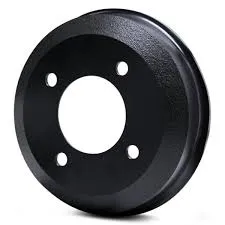Comparison of Disc Brakes and Drum Brakes in Automotive Systems
Difference Between Disc Brake and Drum Brake
When it comes to automobile braking systems, two of the most commonly used types are disc brakes and drum brakes. Both of these systems serve the critical function of slowing down or stopping a vehicle, but they operate differently and have distinct advantages and disadvantages. Understanding these differences can help in making informed choices regarding vehicle maintenance, performance, and safety.
Operating Mechanism
Disc Brakes Disc brakes consist of a flat, circular disc (the rotor) that is attached to the wheel hub. When the driver presses the brake pedal, hydraulic fluid is transferred to the brake calipers, which then clamp down on the disc through the brake pads. This action creates friction between the pads and the rotor, effectively slowing down the wheel.
Drum Brakes In contrast, drum brakes have a different design. They use a cylindrical drum that rotates along with the wheel. Inside the drum, brake shoes are mounted that push outward against the inner surface of the drum when the brake is applied. This also creates friction and slows down the wheel. The fundamental difference in the mechanisms of the two types of brakes leads to varied performance characteristics.
Performance and Efficiency
Heat Dissipation One of the significant differences lies in heat dissipation. Disc brakes are typically better at dissipating heat because they are exposed to air, which allows for better cooling during operation. This reduced risk of overheating helps maintain performance during extended braking periods, making disc brakes particularly advantageous for high-performance vehicles and situations that require frequent heavy braking, such as in racing.
Conversely, drum brakes can generate more heat due to their enclosed design. As they heat up, their effectiveness can diminish, leading to a phenomenon known as brake fade, where the braking performance decreases significantly.
what is the difference between disc brake and drum brake

Stopping Power Disc brakes generally offer superior stopping power compared to drum brakes. The design allows them to provide more consistent performance under a variety of conditions. In contrast, drum brakes can struggle under heavy load or in wet conditions due to water collection inside the drum, reducing their effectiveness.
Weight and Space
Weight Disc brakes tend to be heavier than drum brakes, primarily due to the additional components, such as the calipers. This additional weight can affect a vehicle’s overall performance and fuel efficiency.
Space In terms of installation, drum brakes often require less space and can be easier to integrate into certain vehicle designs, particularly at the rear of smaller vehicles. This is one reason why many inexpensive or compact cars may still utilize drum brakes on their rear wheels while employing disc brakes on the front.
Maintenance
Durability and Maintenance Needs Disc brakes are generally easier to maintain, as their components are more accessible for inspection and replacement. On the other hand, drum brakes can be more complicated to service, requiring more effort to reach the internal components. However, drum brakes can have longer wear life for the shoes when used in low-stress situations.
Conclusion
In summary, the differences between disc brakes and drum brakes lie in their design, operation, performance, and maintenance requirements. Disc brakes excel in heat dissipation, stopping power, and ease of maintenance, making them the preferred choice for performance-oriented vehicles. Meanwhile, drum brakes remain a viable option for everyday vehicles due to their cost-effectiveness and compact design. Ultimately, the choice between these two braking systems will depend on the specific needs of the vehicle and its intended use. Understanding these differences can help drivers make informed decisions for optimal performance and safety.
-
Truck Drum Brake Spring Replacement ProcedureNewsAug.22,2025
-
Evolution Of Brake Drum Function Designs In Automotive HistoryNewsAug.22,2025
-
Drum Brake Motor Thermal Management SolutionsNewsAug.22,2025
-
Essential tools for brakes and drums repair jobsNewsAug.22,2025
-
Trailer Drum Brake Self-Adjusting Mechanisms ExplainedNewsAug.22,2025
-
Brake Drum Types in Vintage Auto RestorationNewsAug.22,2025
-
Rear Drum Brakes Maintenance TipsNewsAug.04,2025


